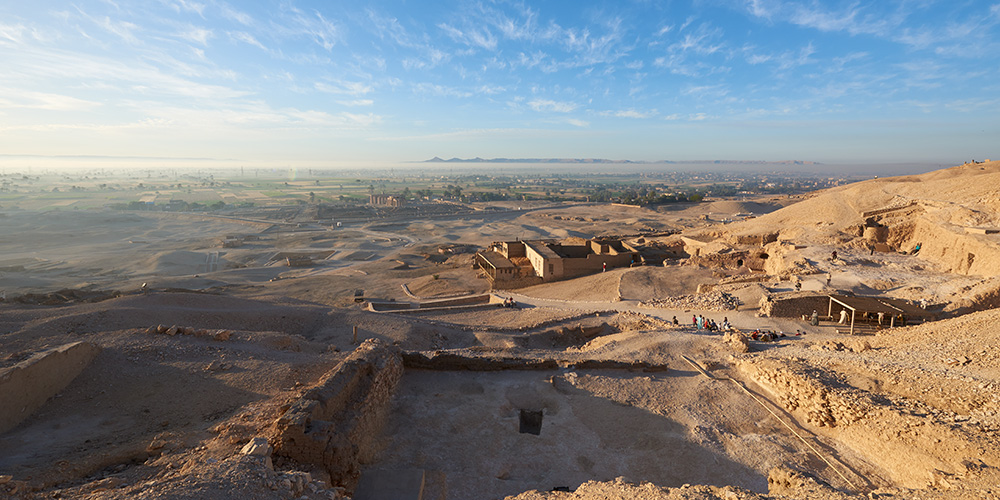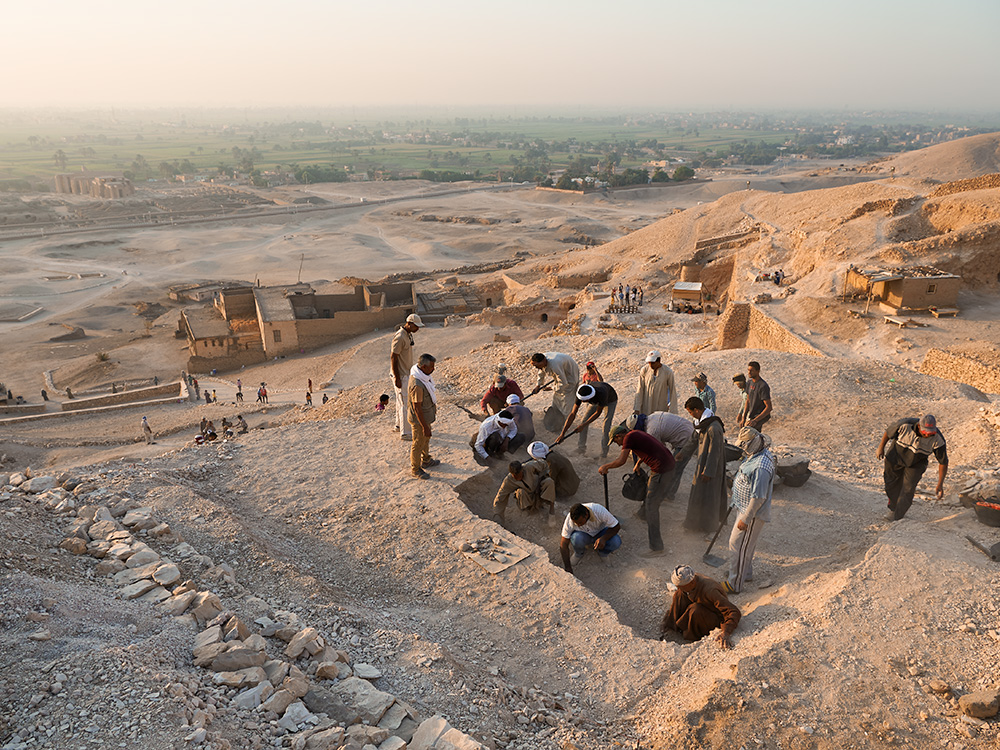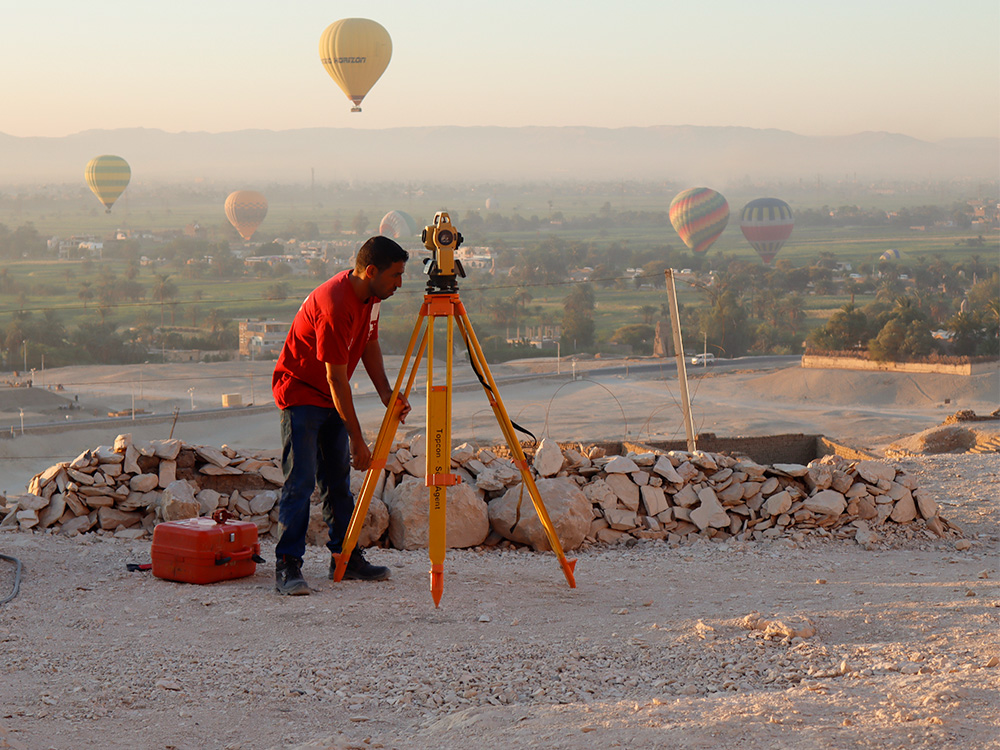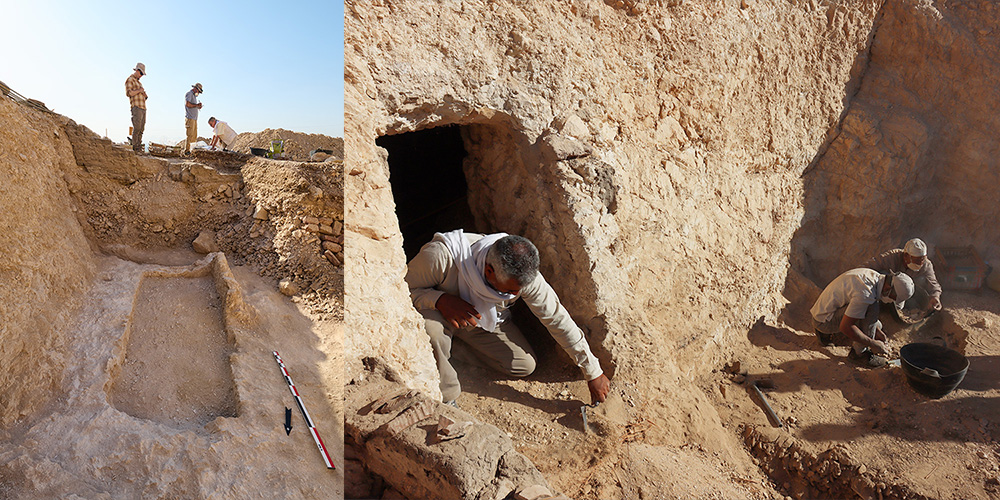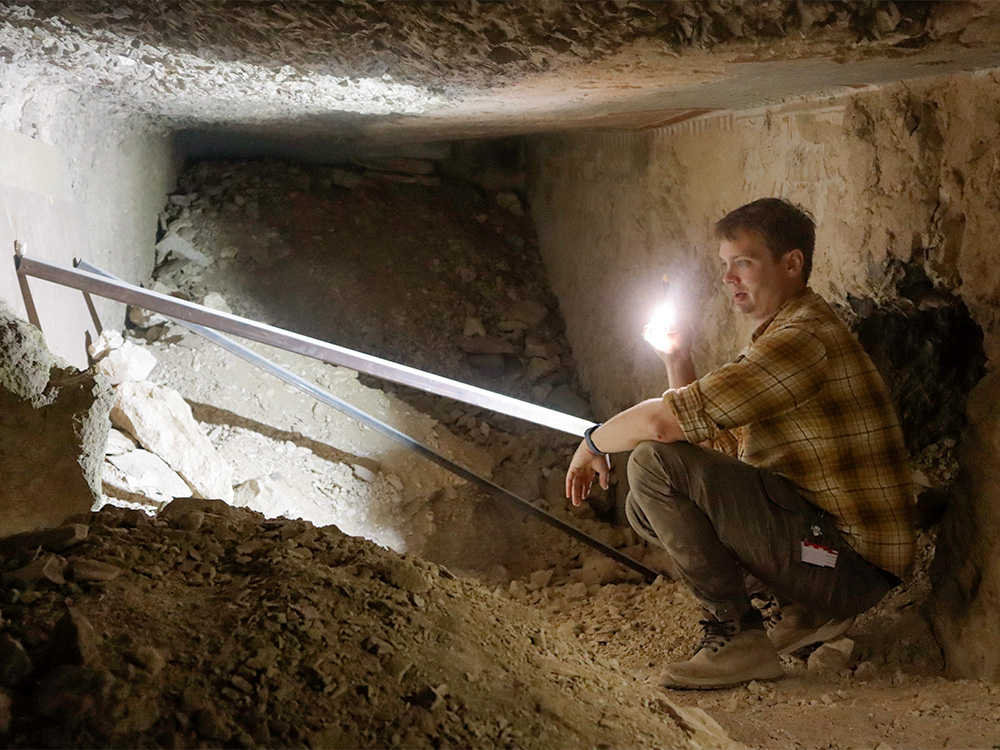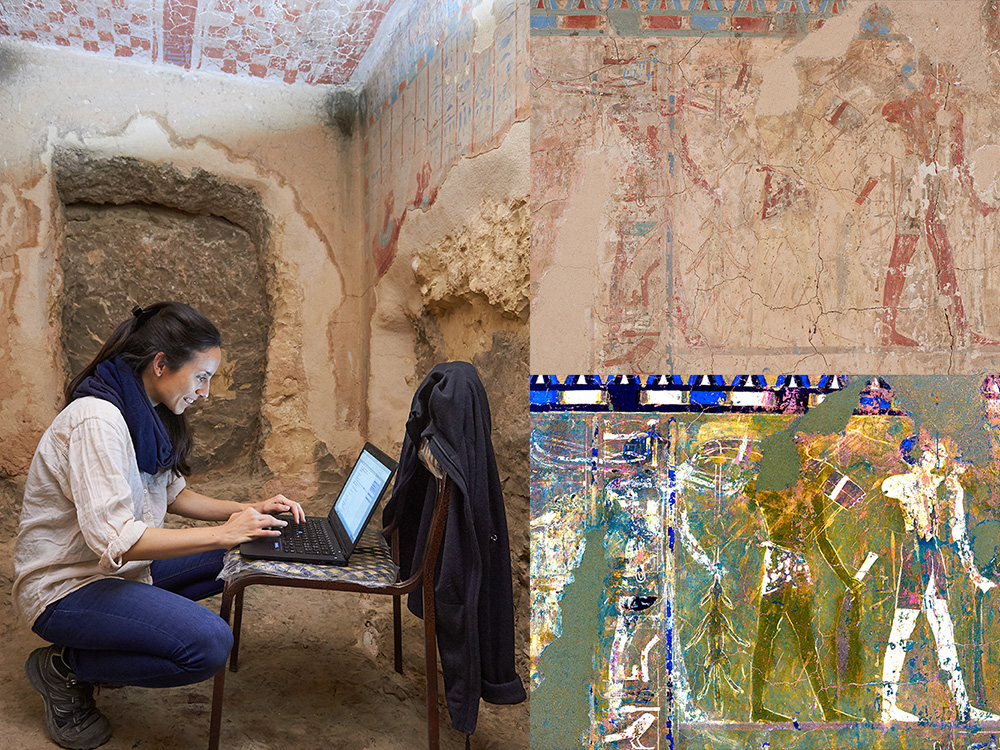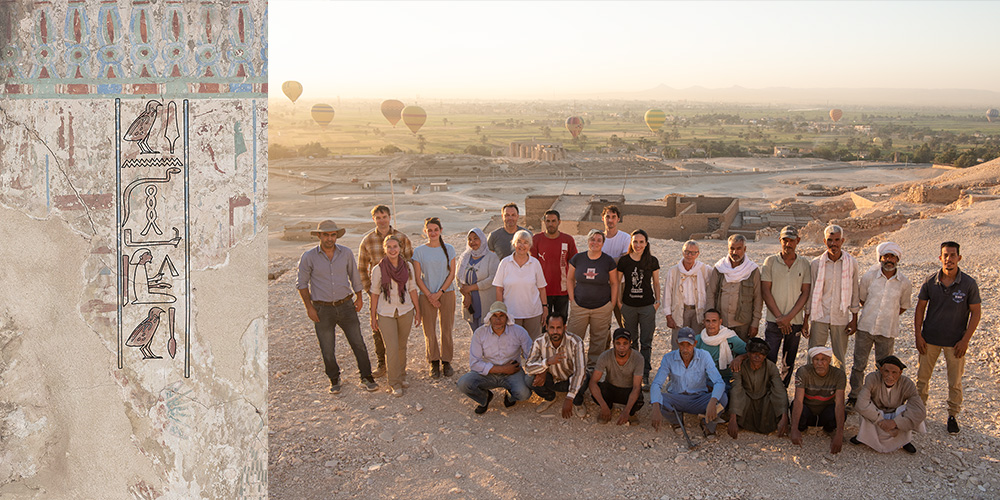Necropolises by the Nile.
Text: Angelika Jacobs
Not far from the city of Luxor, at the foot of the Theban Hills, Susanne Bickel from the University of Basel and her team of researchers are exploring and uncovering a series of rock-cut tombs at an ancient Egyptian necropolis. As they trace the history of the burial ground and the people entombed within it, the team focus on 3,500-year-old remains, wall paintings and inscriptions.
The Basel research project, Life History of Theban Tombs, is based just a few kilometers from the verdant Nile Valley. Since 2015, the research team have been studying various ancient Egyptian tombs, including the burial chapel of a royal herald named Iamunedjeh (tomb TT84, in the foreground) and the tomb of Mery, a high priest to the deity Amun (TT95, on the right).
The most recent excavation campaign in fall 2023 focused on tombs such as K555, immediately adjacent to that of Iamunedjeh (TT84). The archeologists from Basel are supported by local Egyptian field assistants with whom they have a long-standing relationship.
The researchers measure the area precisely to map the locations of the various tombs and the local topography. One aspect of the research project focuses on how the necropolis has developed over the millennia and up to the recent past.
The entrance to tomb K555 was under a large mound of rubble that the team have removed over recent years. In front of the tomb is an open courtyard where settlers built houses in the Middle Ages. A grave shaft was uncovered in this courtyard in October 2023. (on the left)
In the entrance to rock-cut tomb K555 and in the surrounding courtyard, the team carefully search for evidence of how the area has been used: Originally built in the 15th century B.C.E., the tomb was used for further burials over the centuries. The courtyard was later inhabited, and the tomb may have been, too. (on the right)
As the team removed the rubble, they also uncovered tools, such as this hammer, which would have been used to cut into the rock as the tombs were constructed. (on the left)
The team came across the remains of two mummies by the entrance to tomb K555. Based on what they found, they concluded that the mummies had been looted in antiquity or late antiquity. (on the right)
Tomb robbers left behind a tunnel between tomb K555 and neighboring tomb TT84. Today, the researchers use this as a point of access. This photo shows archeologist Lukas Richner inspecting tomb K555 before the team open up the actual entrance and expose the interior.
Meanwhile, the team continue to work in the burial chapel of Iamunedjeh (TT84). Epigraphist Julianna Paksi analyzes the inscriptions in the chamber. The writings on the tombs are recorded, translated, commented on and analyzed. Only parts of the wall paintings remain, and they have sometimes been painted over, so the team examine and document their current condition as precisely as possible on-site. (on the left)
Mithilfe einer speziellen Software namens DStretch kann Paksi auch auf verblassten oder beschädigten Oberflächen (rechtes Bild oben) die Spuren von Restpigmenten künstlich hervorheben (rechtes Bild unten). Dies ist besonders nützlich, wenn sich mehrere Malschichten überlagern wie bei dieser Tributszene.
Specialist software called DStretch allows Paksi to artificially enhance traces of residual pigment on faded or damaged surfaces (right image at the top). This digital analysis is particularly useful if wall decorations have been painted over multiple times, with several overlapping layers of paint. (right image at the bottom) For example, the text and pictures in this tribute scene from tomb TT84 overlap because the wall painting had to be adapted when the interior architecture was expanded.
Tomb TT84 was constructed in the second half of the 15th century B.C.E. and originally belonged to Iamunedjeh, the herald. A generation later, at the end of the rule of Amenhotep II, the name and title of Iamunedjeh and his wife, Henutnofret, were substituted in places by those of the high priest Mery (the owner of the neighboring tomb TT95) and his mother, Hunay. Parts of the original inscriptions (digitally enhanced), however, shine faintly through the decorative layer dedicated to Mery. (on the left)
The team from Basel University and their Egyptian colleagues during the excavation campaign in fall 2023. Every year, students take part in the excavations alongside an international team of experts from various disciplines. (on the right)
Susanne Bickel is Professor of Egyptology in the Department of Ancient Civilizations at the University of Basel. She leads the Basel research project at the Theban necropolis alongside Julianna Paksi and Alexis Den Doncker.
More articles in this issue of UNI NOVA (May 2024).

